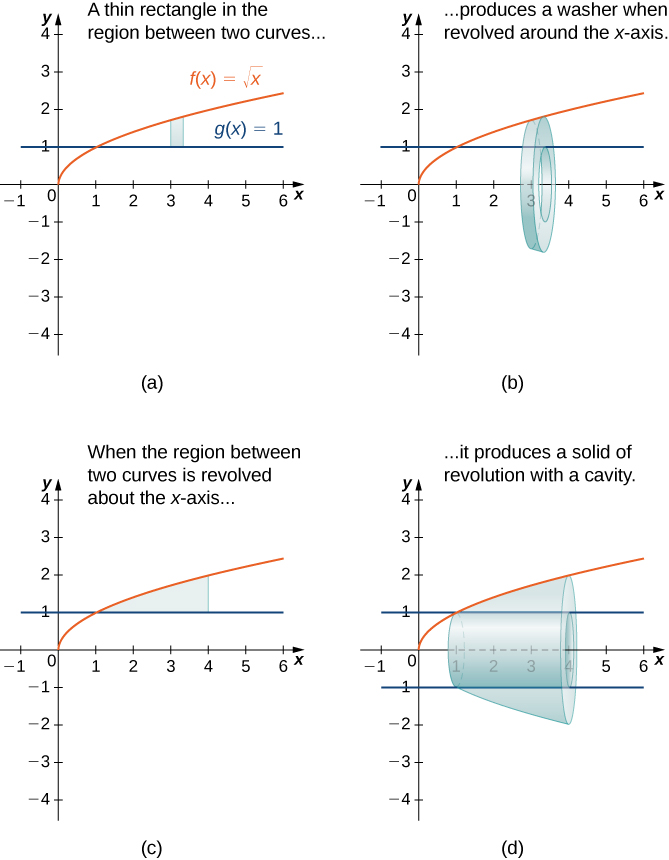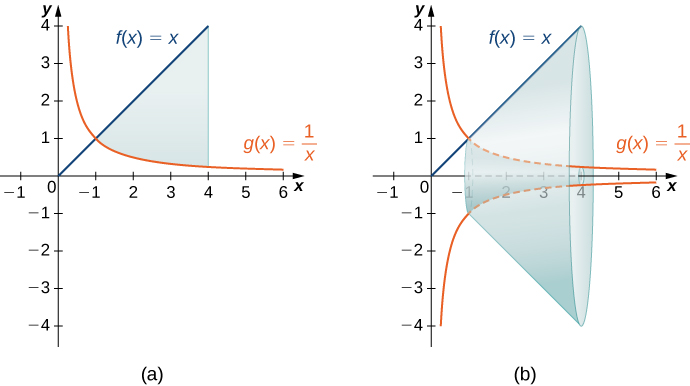| << Chapter < Page | Chapter >> Page > |
Some solids of revolution have cavities in the middle; they are not solid all the way to the axis of revolution. Sometimes, this is just a result of the way the region of revolution is shaped with respect to the axis of revolution. In other cases, cavities arise when the region of revolution is defined as the region between the graphs of two functions. A third way this can happen is when an axis of revolution other than the or is selected.
When the solid of revolution has a cavity in the middle, the slices used to approximate the volume are not disks, but washers (disks with holes in the center). For example, consider the region bounded above by the graph of the function and below by the graph of the function over the interval When this region is revolved around the the result is a solid with a cavity in the middle, and the slices are washers. The graph of the function and a representative washer are shown in [link] (a) and (b). The region of revolution and the resulting solid are shown in [link] (c) and (d).

The cross-sectional area, then, is the area of the outer circle less the area of the inner circle. In this case,
Then the volume of the solid is
Generalizing this process gives the washer method .
Suppose and are continuous, nonnegative functions such that over Let denote the region bounded above by the graph of below by the graph of on the left by the line and on the right by the line Then, the volume of the solid of revolution formed by revolving around the is given by
Find the volume of a solid of revolution formed by revolving the region bounded above by the graph of and below by the graph of over the interval around the
The graphs of the functions and the solid of revolution are shown in the following figure.

We have
Find the volume of a solid of revolution formed by revolving the region bounded by the graphs of and over the interval around the
units 3
As with the disk method, we can also apply the washer method to solids of revolution that result from revolving a region around the y -axis. In this case, the following rule applies.
Suppose and are continuous, nonnegative functions such that for Let denote the region bounded on the right by the graph of on the left by the graph of below by the line and above by the line Then, the volume of the solid of revolution formed by revolving around the is given by

Notification Switch
Would you like to follow the 'Calculus volume 1' conversation and receive update notifications?